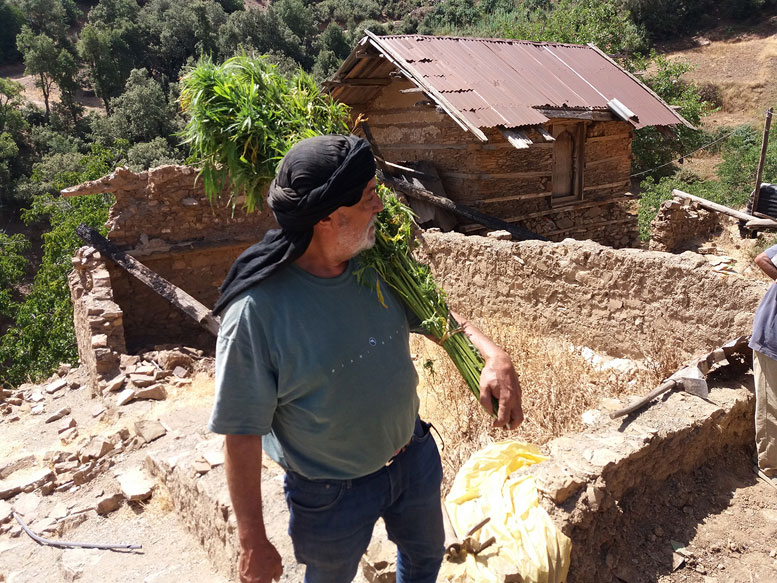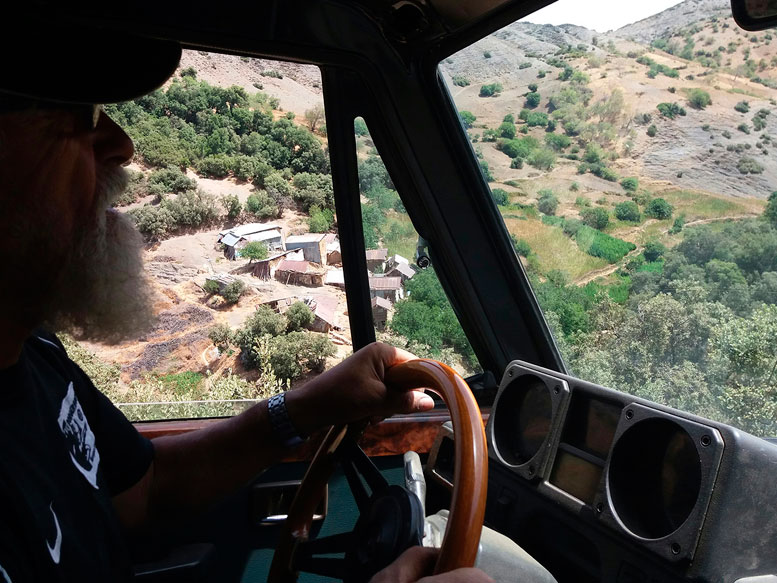After reaching a crowdfunding goal of €32,000, German and Moroccan partners are getting started on a retrofit and hemp-building project that demonstrates their economic development plans in Morocco’s High Central Rif. The area is an historic hemp farming region.
The effort is the pilot for an initiative of German architect and natural builder Monika Brümmer of Granada-based Cannabric, and Abdellatif Adebibe of the Moroccan Confederation of Associations for the Development of the Senhaja Rif Region, founders of the recently created cooperative Adrar Nouh. It is part of a long-term plan to improve living conditions in the Rif, and capitalize on the potential of the region’s cannabis straw for socio-economic development while saving the traditional architecture of the region. The partners see benefits to education and tourism as well.
13 funders pitch in
The crowdfunding campaign, on Vision Bakery, drew funding from 13 parties. The money will be used to retrofit about 80 sq. m traditional terraced structures which in the past served as family dwellings, shelter for livestock and other purposes.

“Because of very difficult access and lack of infrastructure in the region, building materials will mostly be collected from local farms, including hemp straw for building materials and ‘shinti’ (rye straw) for roofs, combining traditional and innovative techniques,” Brümmer said.
The construction site is in Fir Tagourth, a “douar” or smattering of tribal dwellings – a 10-hour drive into the mountains from Tangier. The tribes practice an agro-pastoral culture that embraces local cedar forests and the farming of an ancestral cannabis variety on 500-1,000 sq. meter family plots earlier farmed for whole resource utilization. Individual compounds are dispersed, meaning there are no villages. Drinking water and water for cannabis farming in the area is from natural springs and collected rain water.
‘Amazing’
Looking to future expansion, the project partners already have installed a hemp decorticator in the upper mountains of the Rif near the construction site. And Brümmer recently returned from an 11-day visit during which project representatives accompanied local women to nearby hemp fields as they prepared for harvest season, and cleaned up the construction sites while recruiting construction workers. She said she’ll be back in Morocco soon to source wood for framing, for a trial de-cortication run and to oversee the collection of local hemp straw.

The group recently outrigged a rugged 4×4 vehicle to be able to access the remote project site.” The topography is very hilly; paved roads don’t exist, and the last few hundred meters are only traversable by foot.” Brummer said. “But it’s amazing, including a bridge formed by the two halves of a split cedar stem that ends up in an emblematic rock behind which appears the roof of the first house,” Brümmer said.


